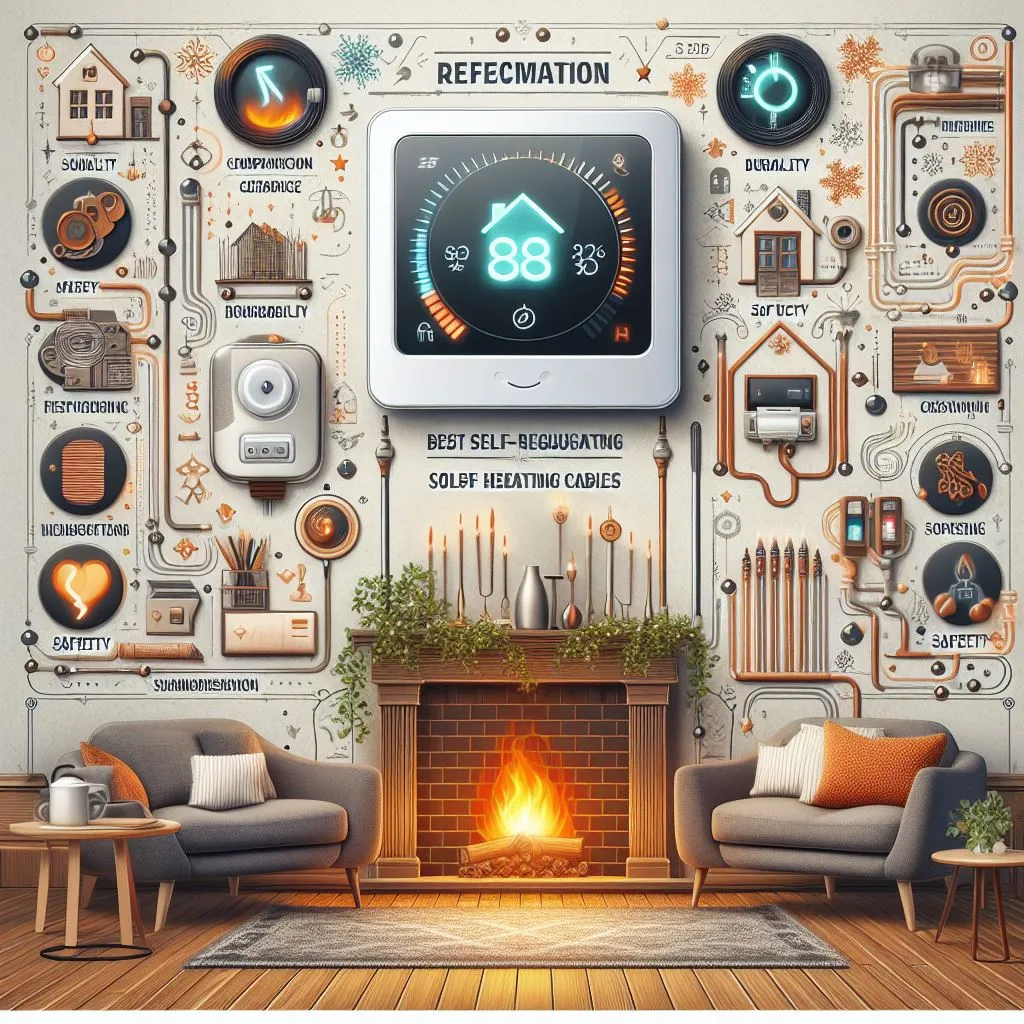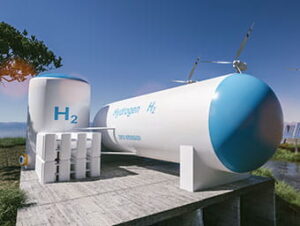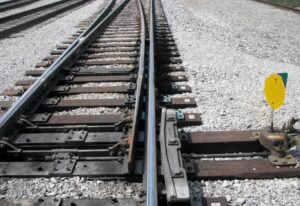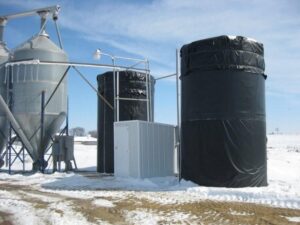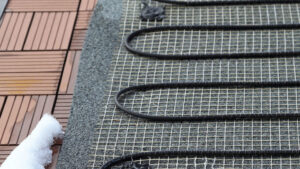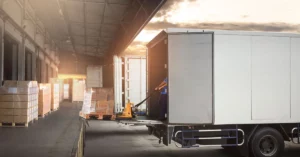Self-regulating heating cables are innovative and efficient solutions designed to provide precise and reliable temperature control in various applications. These self-regulating heating cables are engineered to automatically adjust their heat output based on changes in ambient temperature, ensuring optimal performance and energy efficiency. You can read more about heating cable at SVR Trace .
At the core of self-regulating heating cables is a unique conductive polymer matrix. This matrix allows the cable to respond dynamically to temperature variations. As the surrounding temperature drops, the polymer matrix contracts, increasing the cable’s power output to generate more heat. Conversely, when the temperature rises, the matrix expands, reducing the power output and preventing overheating. This self-regulating feature makes these cables highly versatile and adaptable to a wide range of environmental conditions. Check our shop for the best heating cables and order now!
Contact us and get your products.
One of the key advantages of self-regulating heating cables is their ability to prevent overheating and potential damage. Traditional constant wattage cables lack the self-adjusting capability, which can lead to excessive heat production if not carefully monitored. In contrast, self-regulating cables offer a more energy-efficient solution by only supplying the necessary heat required for the specific conditions, resulting in lower operational costs.
These heating cables find applications in diverse industries, such as freeze protection, pipe tracing, roof and gutter de-icing, and process temperature maintenance. Their versatility and reliability make them suitable for both residential and industrial environments. Additionally, self-regulating heating cables are easy to install and require minimal maintenance, making them a cost-effective solution for long-term use.
In conclusion, self-regulating heating cables represent a technological advancement in temperature control systems. Their adaptive nature, energy efficiency, and broad applicability make them a preferred choice for various heating applications, providing users with a reliable and cost-effective solution for maintaining optimal temperatures in diverse environments.
Visit our blog page for the newest content about industrial products and household products in the field of the underfloor heating!
- What is the operating principle of Self-Regulating Heating Cables?
- What are the applications of Self-Regulating Heating Cables?
- What are the advantages over conventional heating systems?
- How is a Self-Regulating Cables installed and configured?
- What are the safety features and standards compliance
- Is a comparative analysis with Other Heating Technologies useful?
- What is the environmental impact and sustainability of these cables?
- Are Real-world Applications of these cables studied?
- What are the future trends and innovations?
These are the questions that will be answered in this article. So lets continue!
Table of contents
- Operating Principle of Self-Regulating Heating Cables
- Applications of Self-Regulating Heating Cables
- Advantages Over Conventional Heating Systems
- Installation and Configuration of Self-Regulating Cables
- Safety Features and Standards Compliance
- Comparative Analysis with Other Heating Technologies
- Environmental Impact and Sustainability
- Case Studies: Real-world Applications
- Future Trends and Innovations
- FAQs
- Conclusion and summery
Operating Principle of Self-Regulating Heating Cables
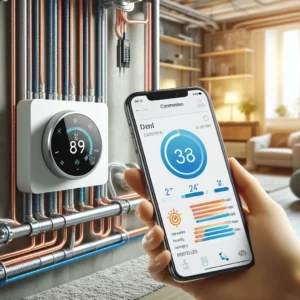
Operating Principle of Self-Regulating Heating Cables:
The operating principle of self-regulating heating cables is rooted in the unique characteristics of their conductive polymer matrix. This matrix is the key element that sets self-regulating cables apart from traditional heating systems. The cable’s ability to dynamically respond to changes in temperature is what makes it a highly efficient and versatile solution for temperature control like constant wattage heating cables.
At the heart of the self-regulating heating cables there exists a conductive core comprised of a conductive polymer. This polymer matrix is formulated to exhibit a property known as positive temperature coefficient and cost-coefficient(PTC). In simple terms, as the ambient temperature decreases, the polymer matrix contracts, causing the material to become more conductive. This increased conductivity allows more electrical current to flow through the cable, generating additional heat.
Conversely, when the temperature rises, the polymer matrix expands, reducing its conductivity. As a result, the self-regulating heating cables generate less heat. This self-regulating characteristic ensures that the cable adapts to the specific thermal requirements of the surrounding environment. It effectively prevents overheating, making it a safer and more energy-efficient heating solution compared to traditional constant wattage cables.
The self-regulating heating cables have the ability to automatically adjust its heat output along its entire length is a notable advantage. This feature allows for a uniform distribution of heat, eliminating hot spots and ensuring that the entire length of the cable operates efficiently.
In practical terms, this technology is employed in various applications such as freeze protection, where the cable can be installed along pipes to prevent them from freezing. It is also used for roof and gutter de-icing, ensuring that ice does not accumulate and cause damage. The self-regulating heating cable’s adaptability and efficiency make it a reliable choice for diverse heating requirements in both residential and industrial settings exactly like underfloor heating cable.
Applications of Self-Regulating Heating Cables
Applications of Self-Regulating Heating Cables
Self-regulating heating cables find a wide range of applications across various industries, providing efficient and reliable solutions for temperature control in diverse environments. The adaptability and energy efficiency and sustainability of these cables make them suitable for a myriad of applications, contributing to increased safety, reduced operational costs, and improved performance.
1. Freeze Protection: One of the primary applications of self-regulating heating cables is in freeze protection. These cables are commonly used to prevent pipes, valves, and other critical equipment from freezing in cold climates. By installing the cables along the length of the pipes, they automatically adjust their heat output based on the ambient temperature, ensuring that the pipes remain at a temperature sufficient to prevent freezing.
2. Pipe Tracing: Self-regulating heating cables are employed for pipe tracing applications, especially in industrial settings. They help maintain the optimal temperature of fluids flowing through pipes, preventing them from solidifying or congealing. This is crucial in industries where the flow of liquids is critical, such as in chemical processing plants or refineries.
3. Roof and Gutter De-Icing: In colder climates, roofs and gutters can accumulate ice and snow, leading to potential hazards and damage. Self-regulating heating cables are utilized to prevent ice dams from forming and to melt existing ice, ensuring proper drainage and preventing structural issues.
4. Process Temperature Maintenance: Industries that require precise temperature control in their processes, such as manufacturing and food processing, benefit from the use of self-regulating heating cables. These cables help maintain consistent temperatures in tanks, vessels, and other equipment, ensuring product quality and operational efficiency.
5. Residential Snow Melting: In residential settings, self-regulating heating cables are often installed in driveways, walkways, and staircases to melt snow and ice. This not only enhances safety by preventing slippery surfaces but also eliminates the need for manual snow removal solved by radiant floor heating products.
6. Oil and Gas Industry: Self-regulating heating cables play a crucial role in the oil and gas industry for applications like maintaining the temperature of pipelines and equipment, preventing the crystallization of certain substances, and ensuring the smooth flow of fluids in challenging environmental conditions.
In summary, self-regulating heating cables offer versatile solutions for temperature control, making them indispensable in various industries where precise and efficient heating is essential also quality of underfloor heating systems. Their applications span from safeguarding critical infrastructure to enhancing everyday safety and convenience in residential settings.
Advantages Over Conventional Heating Systems
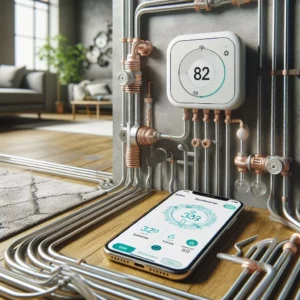
Self-regulating heating cables offer numerous advantages over conventional heating systems, revolutionizing the way we approach temperature control in various applications. One primary advantage lies in their energy efficiency. Unlike conventional systems that operate continuously, self-regulating heating cables automatically adjust their heat output based on the surrounding conditions. This dynamic response ensures optimal energy consumption, preventing unnecessary usage and reducing overall energy costs.
Another notable advantage is their versatility and adaptability. Self-regulating heating cables can be easily installed in a variety of environments and applications, including pipes, roofs, gutters, and more. Their flexibility allows for efficient coverage of complex or irregularly shaped surfaces, ensuring comprehensive heating where it is needed most like the best heating cable with inactive copper. This adaptability makes them a superior choice for both residential and industrial settings.
Moreover, self-regulating heating cables offer enhanced safety features. Traditional heating systems may pose a risk of overheating or hotspots, potentially leading to fires or damage. In contrast, self-regulating cables automatically adjust their heat output in response to temperature changes, mitigating the risk of overheating and providing a safer heating solution efficient even in hydronic underfloor heating.
Installation and maintenance are simplified with self-regulating heating cables, further adding to their advantages. The cables can be cut to the desired length, making them easy to customize for specific applications. Additionally, their self-regulating nature reduces the need for complex control systems, minimizing installation and maintenance costs making them usable with of thermostats in home heating.
In terms of reliability, self-regulating heating cables excel. They are designed to withstand harsh environmental conditions, ensuring consistent performance even in extreme temperatures. This durability translates to a longer lifespan and fewer maintenance requirements compared to conventional heating systems.
In conclusion, the advantages of self-regulating heating cables over conventional systems are evident in their energy efficiency, versatility, safety features, ease of installation, and overall reliability. As technology continues to advance, these innovative heating solutions are likely to play an increasingly prominent role in optimizing temperature control across various industries and applications.
Installation and Configuration
The installation and configuration of self-regulating heating cables are straightforward processes that contribute to their popularity and efficiency in various applications. When installing these cables, it is essential to follow specific guidelines to ensure optimal performance and safety in home heating systems.
Firstly, the selection of the appropriate self-regulating cable is crucial. The cables come in various types and specifications, designed for specific applications such as pipe tracing, roof and gutter de-icing, or floor heating. Understanding the requirements of the intended application is essential in choosing the right cable for the job.
The installation process typically involves measuring and cutting the self-regulating cable to the desired length. This flexibility in customization allows for precise coverage of the target surface, ensuring efficient and even heating. It’s important to follow manufacturer instructions and guidelines during the installation process to guarantee proper functionality protecting environment in home heating industry.
Proper insulation is vital to maximize the effectiveness of self-regulating cables. Installing insulation over the cable helps retain the generated heat, preventing heat loss and improving energy efficiency. This step is particularly crucial in outdoor applications or areas prone to temperature fluctuations.
When configuring self-regulating heating cables, temperature control and monitoring systems play a key role. Some cables may require the integration of thermostats or controllers to regulate the heat output based on environmental conditions. Careful placement of these control devices ensures accurate temperature management and prevents overheating.
Regular maintenance checks are recommended to ensure the continued functionality of self-regulating heating cables. Inspecting the cables for any signs of wear, damage, or corrosion is essential. Additionally, checking the integrity of insulation and control systems helps identify and address any potential issues promptly.
In summary, the installation and configuration of self-regulating heating cables involve selecting the right type of cable, precise measurement and cutting, proper insulation, integration of temperature control devices, and routine maintenance checks. Adhering to these guidelines ensures the effective and safe operation of self-regulating cables, making them a reliable solution for a wide range of heating applications. The history of home heating might interest you.
Safety Features and Standards Compliance
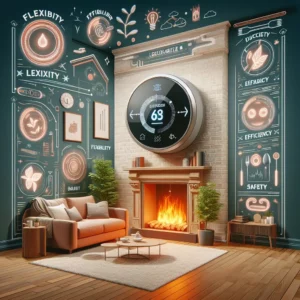
Safety features and standards compliance are critical aspects that contribute to the reliability and widespread use of self-regulating heating cables. These innovative heating systems are designed with a range of safety measures to ensure efficient and secure operation in various applications.
One of the key safety features of self-regulating heating cables is their ability to adjust heat output based on surrounding temperatures. This self-regulation mechanism prevents overheating, reducing the risk of damage to the cable and the surrounding environment. Unlike conventional heating systems that may pose a fire hazard due to constant heat output, self-regulating cables provide a safer and more controlled heating solution. You can use heat tracing cables for this too.
Additionally, self-regulating heating cables often undergo rigorous testing to comply with industry standards and regulations. These standards ensure that the cables meet specific safety criteria and performance benchmarks. Compliance with standards such as UL (Underwriters Laboratories) or IEC (International Electrotechnical Commission) provides users with confidence in the quality and safety of the product.
Furthermore, many self-regulating heating cables are designed with features like a dual-layer construction and an outer jacket resistant to moisture and environmental elements. This design enhances the durability of the cables and protects them from damage caused by external factors, ensuring a longer lifespan and reliable performance.
Installation guidelines provided by manufacturers also emphasize safety considerations. Proper insulation, correct cable routing, and adherence to recommended installation practices contribute to the overall safety of the system. Try it on the best underfloor heating straps. These guidelines help prevent issues such as hotspots, which can occur if the cable is improperly installed or if insulation is insufficient.
In conclusion, the safety features and standards compliance of self-regulating heating cables are integral to their success in various applications. The self-regulation mechanism, adherence to industry standards, and additional design features ensure not only efficient heating but also a high level of safety for users and the surrounding environment. As a result, self-regulating heating cables have become a trusted and preferred solution for temperature control in diverse settings.
Comparative Analysis with Other Heating Technologies
A comparative analysis of self-regulating heating cables against other heating technologies reveals distinct advantages that position them as a versatile and efficient solution across various applications. One notable comparison is with constant wattage heating cables, a traditional alternative in household underfloor heating.
Self-regulating heating cables outshine constant wattage cables in terms of energy efficiency. The self-regulation mechanism of the former allows them to adjust their heat output based on ambient temperatures. As the surroundings warm up, the cables reduce their power consumption, leading to energy savings. In contrast, constant wattage cables maintain a consistent heat output regardless of environmental conditions, resulting in potential energy wastage. Oil and gas industry and underfloor heating topic is related and might interest you.
Compared to hydronic heating systems, which involve circulating heated water through pipes, self-regulating cables offer a simpler and more cost-effective installation. Hydronic systems often require complex plumbing and are susceptible to leaks. Self-regulating cables, on the other hand, are easily customizable, allowing for straightforward installation on pipes, roofs, and gutters without the need for extensive infrastructure.
When comparing self-regulating heating cables to radiant floor heating, another popular technology, the former often proves more versatile. While radiant floor heating provides warmth from the ground up, self-regulating cables can be applied to a variety of surfaces, including pipes, preventing freezing, and ensuring consistent temperatures in diverse settings. The best parallel silicone heating cable can be used in this situations.
Safety is a paramount concern in heating technologies, and here too, self-regulating cables demonstrate an advantage. Their ability to self-regulate prevents overheating, reducing the risk of fire hazards compared to constant wattage systems. The dynamic response to temperature changes ensures a safer and controlled heating environment. The best underfloor heating film can be an example.
In conclusion, the comparative analysis highlights the superiority of self-regulating heating cables in terms of energy efficiency, installation simplicity, versatility, and safety when pitted against traditional technologies like constant wattage cables, hydronic heating, and radiant floor heating. These advantages position self-regulating heating cables as a modern and reliable solution for diverse heating applications.
Environmental Impact and Sustainability
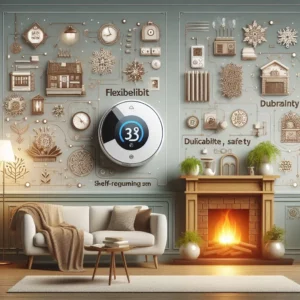
The environmental impact and sustainability of self-regulating heating cables make them a commendable choice in the context of eco-friendly and energy-efficient heating solutions used in elevated kitchens as an underfloor heating benefit. One of the primary contributors to their positive environmental profile is their inherent energy efficiency.
Self-regulating heating cables dynamically adjust their heat output based on surrounding temperatures, ensuring that they only consume the necessary amount of energy. This contrasts with conventional heating systems that operate continuously, often leading to unnecessary energy consumption. The efficiency of self-regulating cables contributes to reduced carbon emissions and lowers overall energy demand, aligning with sustainability goals.
Moreover, the design and materials used in self-regulating heating cables often prioritize durability and longevity. These cables are built to withstand harsh environmental conditions, reducing the need for frequent replacements. Longer lifespan translates to fewer discarded materials, minimizing waste and further promoting sustainability.
The installation process of self-regulating heating cables also adds to environmental appeal and health benefits of underfloor heating systems. Their flexibility allows for precise customization and coverage, reducing excess material usage. Additionally, the ease of installation contributes to lower labor requirements and, consequently, a reduced carbon footprint associated with the installation process.
In terms of compliance with environmental standards, many manufacturers adhere to eco-friendly practices in the production of self-regulating heating cables. This includes using materials that are non-toxic and recyclable, ensuring that the overall life cycle of the product minimizes environmental impact.
The reduced energy consumption, extended lifespan, and eco-friendly manufacturing practices collectively position self-regulating heating cables as a sustainable heating solution. As industries and individuals increasingly prioritize environmental considerations, the adoption of these cables aligns with the global push towards more sustainable and eco-conscious practices in the realm of heating and energy usage.
Case Studies: Real-world Applications
Real-world applications of self-regulating heating cables demonstrate their versatility and effectiveness across various industries. In the realm of residential applications, these cables find extensive use in preventing ice dams on roofs and freezing pipes. The self-regulating feature ensures that they activate only when needed, providing an energy-efficient solution for homeowners while safeguarding against potential damage caused by ice buildup.
In commercial settings, self-regulating heating cables play a crucial role in maintaining the functionality of critical infrastructure. For example, they are applied to prevent freezing in pipes and valves in industrial facilities, ensuring uninterrupted operations in cold climates. This application not only safeguards against potential equipment damage but also contributes to operational efficiency by preventing downtime.
The oil and gas industry also benefits from the application of self-regulating heating cables. These cables are utilized to maintain optimal temperatures in pipelines, preventing the solidification of crude oil and ensuring a smooth flow during transportation and installation process of underfloor heating systems. The self-regulation capability proves instrumental in dynamically adjusting heat output based on external conditions, enhancing energy efficiency in pipeline heating systems.
In the realm of agriculture, self-regulating heating cables find application in frost protection for crops and greenhouses. By preventing frost damage, these cables contribute to increased crop yields and sustained agricultural productivity. The adaptability of self-regulating cables allows for efficient coverage of various agricultural structures and landscapes.
Additionally, self-regulating heating cables are utilized in the transportation sector, particularly for maintaining proper conditions in rails and switch points and heating cables and signaling equipment. The cables prevent ice accumulation, ensuring the safe and reliable operation of railway systems in cold climates.
These case studies highlight the diverse and practical applications of self-regulating heating cables, showcasing their adaptability in addressing unique challenges across residential, commercial, industrial, agricultural, and transportation sectors. The real-world success stories underscore the reliability and efficiency of self-regulating heating cables in meeting the heating needs of diverse environments and industries.
Future Trends and Innovations
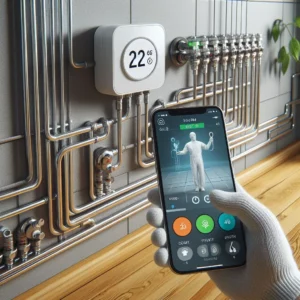
The future trends and innovations of self-regulating heating cables are poised to enhance efficiency, sustainability, and adaptability across various industries. As technology continues to evolve, several key advancements are anticipated in the realm of self-regulating heating cables.
Integration with Smart Technology: The incorporation of self-regulating heating cables into smart building systems is a notable trend. This involves the integration of sensors and smart controls that enable real-time monitoring and adjustment of heating levels based on environmental conditions. Such innovations enhance energy efficiency and provide users with greater control over their heating systems. Some new trends in heating cable market are available.
Advanced Materials and Manufacturing Techniques: Future developments may bring about advancements in materials used in self-regulating heating cables. This could include the use of more sustainable and eco-friendly materials, as well as improvements in manufacturing techniques to enhance durability and overall performance. These innovations would contribute to the cables’ longevity and reduce their environmental impact.
Energy Harvesting: The exploration of energy harvesting technologies is a potential avenue for future innovation in self-regulating heating cables. This could involve the development of cables that harness ambient energy sources, such as solar or thermal energy, to power the self-regulation mechanism like one used in silo heating and heating cables. Energy harvesting would further enhance the sustainability of these heating solutions.
Enhanced Integration in Renewable Energy Systems: As the world increasingly shifts towards renewable energy sources, self-regulating heating cables may see enhanced integration with these systems. This could involve coupling with solar or geothermal energy systems to power the cables, aligning with the broader trend of sustainable energy practices.
Increased Customization and Application Diversity: Future innovations in self-regulating heating cables may involve increased customization options and expanded application diversity. This could include cables designed for specific industries or unique environments, providing tailored solutions to meet diverse heating needs.
In conclusion, the future of self-regulating heating cables holds exciting possibilities with trends leaning towards smart technology integration, advanced materials, energy harvesting, greater synergy with renewable energy sources, and increased customization. These innovations are expected to further solidify the position of self-regulating heating cables as efficient, sustainable, and adaptable solutions in the evolving landscape of temperature control technologies used in open space heating and heating cables.
FAQs
Frequently Asked Questions (FAQs) about Self-Regulating Heating Cables:
1. What is a self-regulating heating cable?
Answer: A self-regulating heating cable is an electrical cable that automatically adjusts its heat output based on the surrounding temperature, providing energy-efficient heating solutions.
2. Where are self-regulating heating cables commonly used?
Answer: They are widely used for various applications, including preventing ice buildup on roofs, thawing frozen pipes, maintaining industrial pipeline temperatures, and offering frost protection in agricultural settings.
3. How do self-regulating heating cables differ from constant wattage cables?
Answer: Unlike constant wattage cables, self-regulating cables dynamically adjust their heat output. As the temperature decreases, the cables increase heat production, and vice versa, leading to energy savings.
4. Are self-regulating heating cables safe?
Answer: Yes, self-regulating heating cables are designed with safety features to prevent overheating. Their ability to self-regulate minimizes the risk of fire hazards associated with constant heat output systems.
5. Can self-regulating heating cables be installed on various surfaces?
Answer: Yes, these cables are flexible and can be installed on a variety of surfaces, including pipes, roofs, gutters, and floors. Their versatility allows for efficient coverage in diverse applications.
6. Do self-regulating heating cables require maintenance?
Answer: Regular maintenance checks are recommended to ensure optimal performance. Inspecting for wear, damage, or corrosion, and verifying the integrity of insulation contribute to the longevity of the system.
Conclusion and summery

In conclusion, self-regulating heating cables stand as a transformative solution in the realm of temperature control, offering a versatile, energy-efficient, and safe approach to heating diverse environments (loading and unloading process of heating cables will be discussed). Their dynamic capacity to adapt to changing temperatures, preventing wasteful energy consumption, sets them apart from conventional heating systems. This adaptability finds application across industries, from residential homes, where they prevent ice dams and freeze protection, to critical infrastructure and industrial settings, ensuring the seamless operation of pipelines and equipment.
The environmental impact of self-regulating heating cables is notably positive, with advancements in materials and manufacturing techniques contributing to their durability and sustainability. As the world gravitates towards eco-conscious practices, the cables’ energy efficiency aligns with global efforts to reduce carbon footprints. The best drain-line heating cable is product for this.
Looking forward, ongoing innovations in smart technology integration, customization, and potential collaborations with renewable energy sources signal a promising future for self-regulating heating cables. Their reliability, safety features, and adaptability position them as a key player in the evolving landscape of heating technologies, addressing the needs of both today and tomorrow. Overall, self-regulating heating cables emerge as a dynamic and sustainable solution for efficient temperature control in a wide array of applications.

